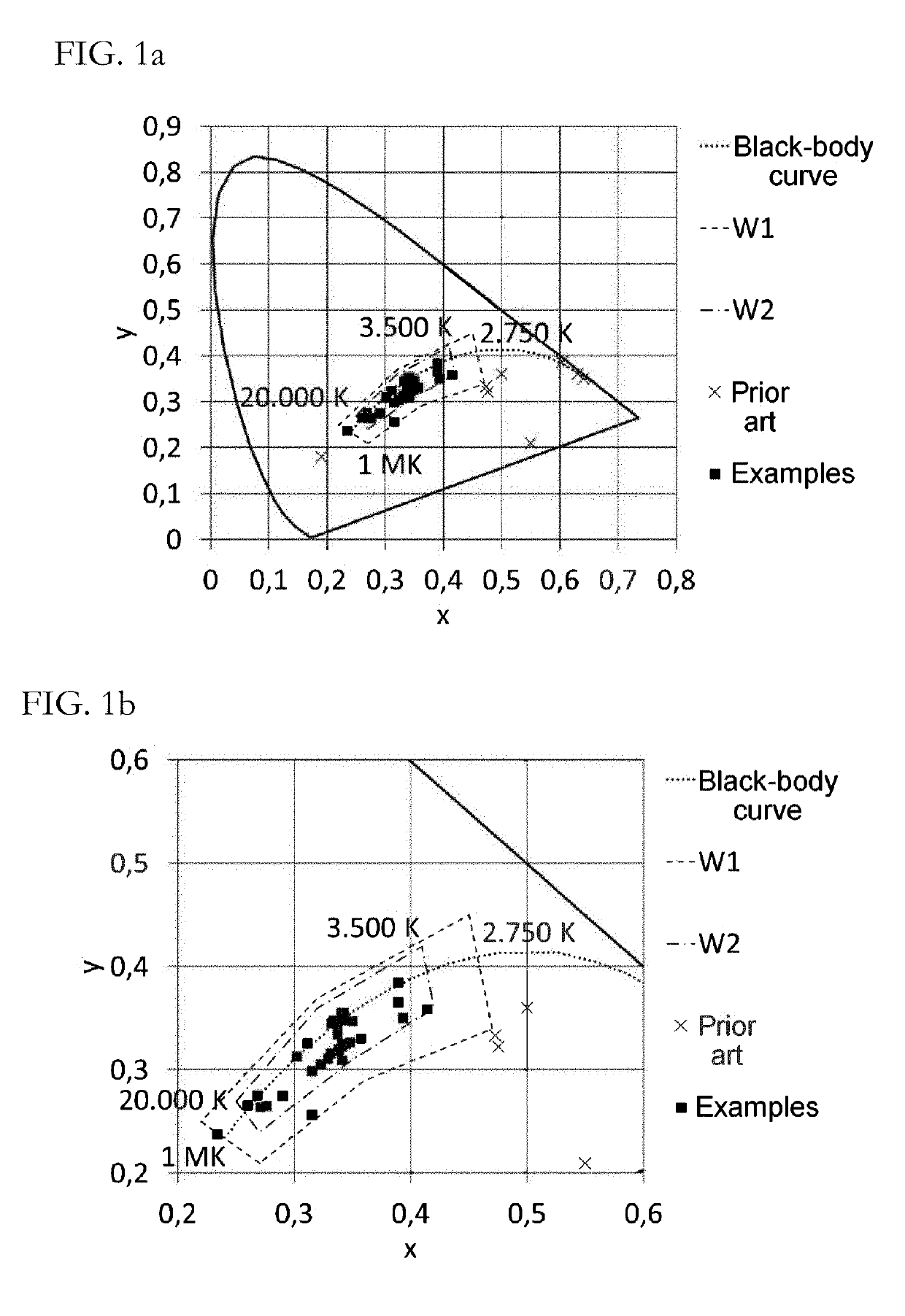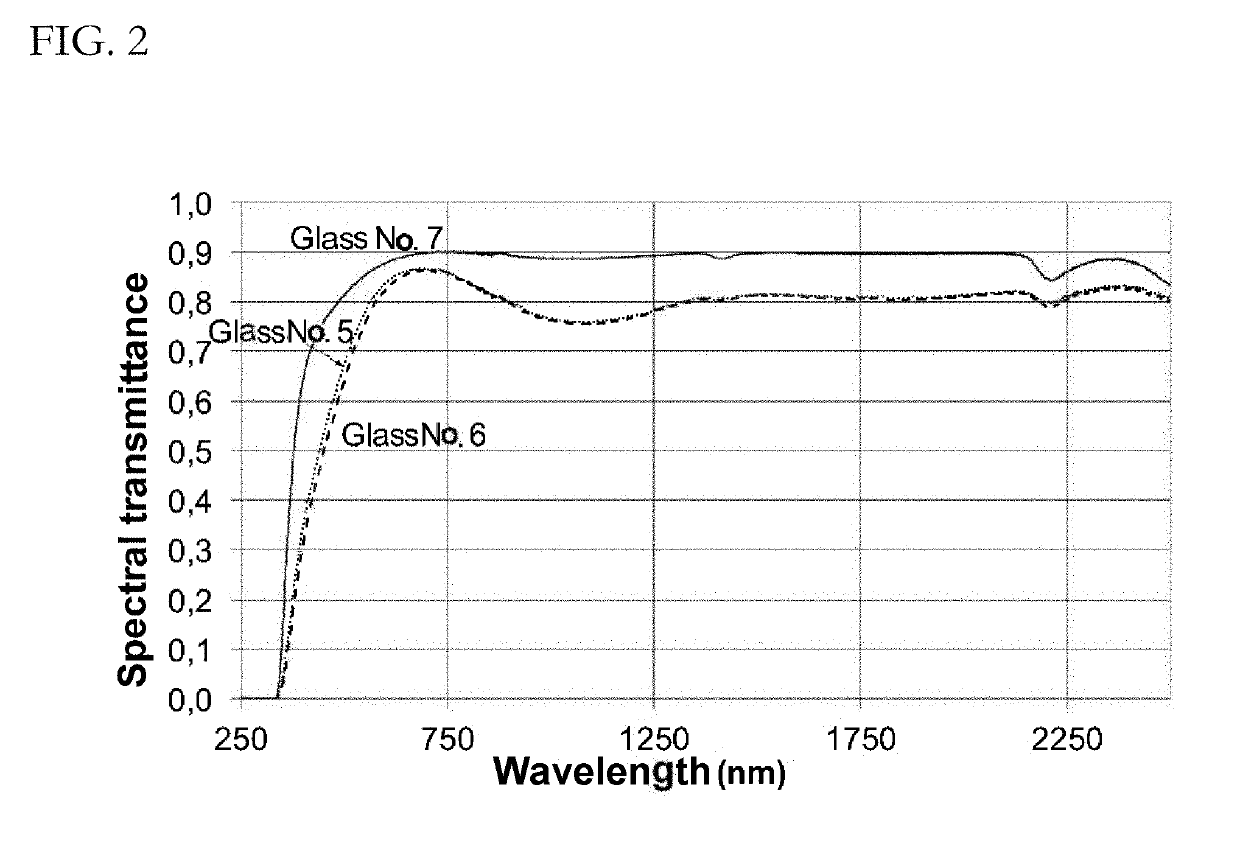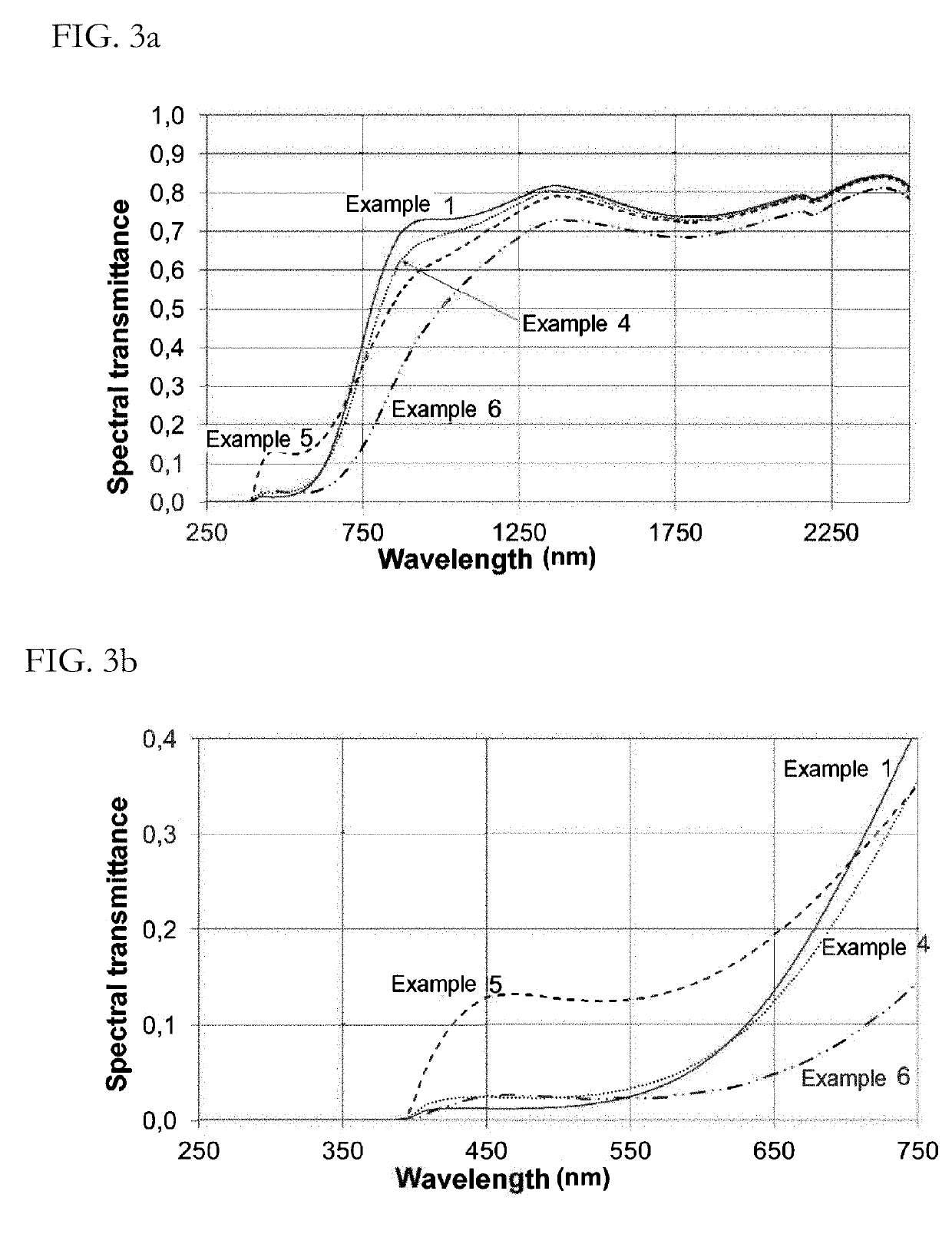The transformation increases the
crystallinity and the glass ceramics become harder.
The establishment of low intrinsic colour is very complex in the case of glass ceramics with
high transmission.
The use of particularly pure raw materials and additional colouring components is disadvantageous for economic reasons.
Nd2O3 is a particularly costly and hence economically particularly disadvantageous colouring component.
Therefore, it is suitable for use in small amounts for overcolouring, but not for use in greater volumes as main colorant.
Since light scatter has an
adverse effect on the outline sharpness of the flames, translucent glass ceramics are not used for stove sightglasses.
Such a light
transmittance achieves the effect that, although the
flame can be seen in operation of the stove, the space behind the glass with the fire extinguished remains in the dark and hence, for example, the inner structure of the oven or stove, which is not very attractive, is invisible.
A
disadvantage in the case of use of such a glass
ceramic as stove sightglass is that the colour of the
flame is altered.
However, a
disadvantage is that a
coating operation constitutes at least one additional process step in the production.
Thus, a coated stove sightglass is economically disadvantageous compared to an uncoated glass.
In that case, the flame can be perceived only poorly, and under some circumstances even not at all.
However, a disadvantage of such a solution is that the outer glass pane also becomes hot in operation.
Furthermore, such a double
glazing constitutes a considerable degree of extra construction complexity in the construction of a stove.
However, these colour oxides are unsuitable for the production of a colour-neutral glass
ceramic since their colour effects in glass ceramics are different and they cannot generate a flat transmission profile.
The reason for this is that the absorption bands on
crystallization become narrower and move unfavourably.
The design and pane geometry also affect the total amount of incident light and hence the demand on
transmittance.
At the same time, however, the colour of the flame must not be altered such that it seems unnaturally colourful.
With a high content of Nd2O3, this does not lead to a flat transmission profile, with the disadvantage that the colour coordinates of the glass ceramic differ relatively significantly from the
standard illuminant used.
The effect of a low
clarity is that articles behind the sightglass have an indistinct or blurred appearance.
Such an effect is undesirable.
Lower contents are less effective for the refining; higher contents promote unwanted
devitrification in the course of shaping through Sn-containing crystals.
Higher contents than 0.25% by weight are therefore unfavourable.
Owing to the high costs of low-iron raw materials, it is uneconomic to reduce the Fe2O3 content to values below 0.005% by weight.
However, V2O5 colours more intensely, and so the content has to be limited in order to achieve the low colour of the disclosure.
Higher contents than 0.02% by weight are therefore unfavourable.
In addition, these compounds can lower transmission in the
infrared.
The minimum content is required for the formation of crystals with low
thermal expansion, but higher contents than 5.5% by weight in the production process frequently lead to unwanted
devitrification.
Higher contents are disadvantageous owing to the tendency to devitrification of
mullite on shaping.
For good melting of the glasses and for low shaping temperatures, higher contents of SiO2 are uneconomic.
Since these components are not incorporated into the
crystal phases but remain essentially in the residual glass phase of the glass ceramic, their contents have to be limited.
Excessively high contents increase the
thermal expansion of the glass ceramic impermissibly and impair the
crystallization characteristics in the transformation of the crystallizable starting glass to the glass ceramic, here particularly at the expense of short ceramization times. Moreover, higher contents have an unfavourable effect on the time / temperature durability of the glass ceramic.
Since these components are not incorporated into the crystal phases but remain essentially in the residual glass phase of the glass ceramic, their contents have to be limited.
Excessively high contents increase the
thermal expansion of the glass ceramic impermissibly and impair the
crystallization characteristics in the transformation of the crystallizable starting glass to the glass ceramic, here particularly at the expense of short ceramization times. Moreover, higher contents have an unfavourable effect on the time / temperature durability of the glass ceramic.
Higher contents than 3% by weight are unfavourable since they increase the scatter of the glass ceramic.
Higher contents have an unfavourable effect on
acid resistance and short ceramization times.
Higher contents than 5.5% by weight are disadvantageous for devitrification resistance and can induce unwanted Ti-containing crystal phases, for example
rutile, in the glass ceramic.
On melting and shaping, these form corrosive compounds such as HF, HCl and HBr, which are disadvantageous for the lifetime of the aggregates.
Strength is impaired in the case of lower thicknesses; higher thicknesses are less economic owing to the higher material requirement.
In the case of a crystallizable glass that has been excessively reduced in the melt, there are greater proportions of
molybdenum in a lower valency, and these lead to uncontrolled
nucleation and crystallization in the glass.
An enamel having poor
adhesive visibility, for example in combination with an uncoloured sightglass, is unsuitable for such sightglasses.
This reflected light reduces the
visibility of the flames, especially when the stove is being operated in a bright environment.
As a result, the outer face of the sightglass remains cooler and the risk of injury through burning on contact with the sightglass falls.
This is undesirable because this gives rise to an inhomogeneous overall impression of the sightglass.
In general, the resulting light transmittance chosen will have to be higher than in the case of a sightglass without reflective
coating since flame visibility, owing to the reflected ambient light, is generally poorer as a result of the use of reflective
layers.
All remarks apply both to polished and unpolished glass ceramics, even though it is known that surface treatments such as
polishing can lead to differences in
light reflection.
 Login to View More
Login to View More 


